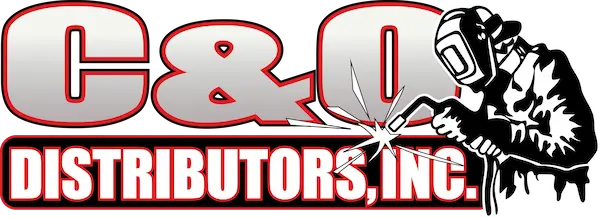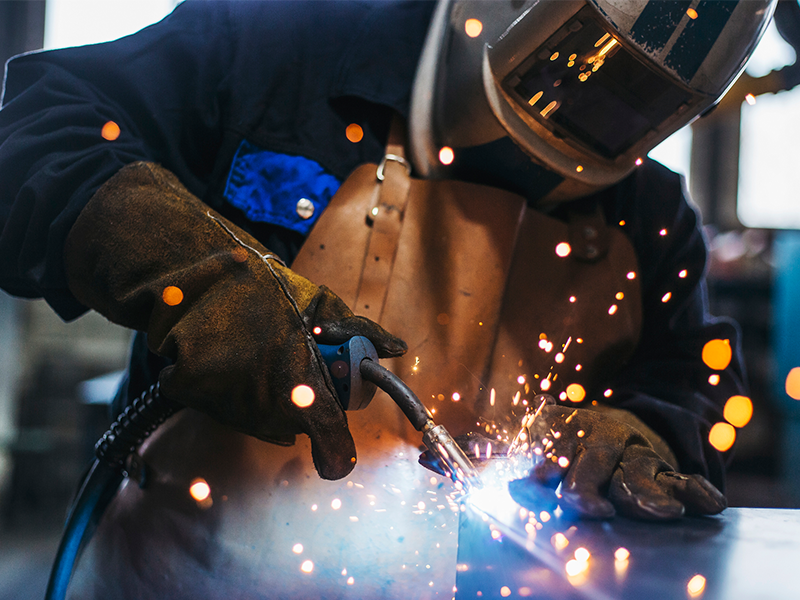Welding remains a critical process in countless manufacturing and construction projects, forging strong bonds between metal workpieces to create robust structures and durable products. Though the practice requires a certain finesse and understanding of its mechanics, welding is often undertaken without the necessary regard for these. This oversight can lead to significant mistakes that compromise the integrity of the final work.
Inadequate Preparation
Before starting any weld, proper preparation is key to a strong and lasting result. Welders need to take the time to clean the metal surface thoroughly. Things like rust, oil, and dirt can weaken the weld and make it crack later.
The right tools and materials are also important. Welders need to choose electrodes and filler metals that work well with the specific type of metal they’re welding. Using the wrong kind of material can create weak welds that might break easily.
Taking the time to set up your equipment properly is crucial as well. Welders should check their tools for wear and make sure everything is calibrated correctly. If not, the weld might not heat evenly, leading to a poor-quality weld.
Finally, welders need to consider the welding settings, like amperage and voltage. These settings determine how much heat is applied to the weld. If the settings are wrong, the weld could be weak or the metal could warp. Taking a few minutes to review these settings beforehand can save a lot of time and effort in the long run.
Incorrect Electrode or Filler Material Selection
The selection of appropriate filler metal directly impacts the strength and longevity of a weld. To achieve a secure bond, the filler metal must be compatible with the base metal being welded. Welders consider two key factors during selection:
- Thermal Properties: The way metals expand and contract during heating and cooling is critical. A significant mismatch between the thermal properties of the filler metal and the base metal can induce stress and lead to cracking in the weld. Welders need a solid understanding of these properties to ensure compatibility.
- Welding Process Compatibility: Different welding techniques require specific filler metals to function optimally. Experienced welders know which filler metals work best with processes like MIG or TIG welding. Selecting an incompatible filler metal can result in weak, brittle, or porous welds, ultimately compromising the integrity of the joint.
In addition to these factors, industry standards and project requirements often dictate the specific filler metal needed. Welders must confirm that both the base metal and the chosen filler metal meet any relevant certifications or specifications. This verification ensures the final welded structure adheres to regulations and avoids potential rework due to non-compliance. By following these steps and making informed choices about filler metals, welders can achieve high-quality, durable welds.
Improper Machine Settings
Welders need to set their machines carefully to match the specific job they’re doing. Using the wrong settings can lead to weak or damaged welds. Two key settings are amperage and voltage. These control how much heat goes into the weld. If the settings are too low, the weld won’t be strong enough. If they’re too high, the metal can melt too much and become weak or even burn through.
Another important setting is the gas flow rate. This gas protects the weld from contamination by the air. If the flow rate is too low, the weld can become weak and porous. If it’s too high, it’s just wasting gas. More so, the wire feed speed needs to be set correctly. This controls how fast the welding wire feeds into the weld pool. If the speed is too slow, the arc can become unstable and create a spatter. If it’s too fast, the weld bead can become thin and weak—tarnishing the weld’s appearance and functionality.
Poor Welding Technique
Even the way a welder moves the torch can affect the quality of the weld. A steady hand and even speed are important to make sure the heat goes into the weld evenly. If the welder isn’t smooth, it can cause problems like splatter, a bad-looking weld, or weak spots.
The angle of the torch is also important. Holding it at the right angle helps the weld penetrate the metal properly and form a good bead shape. If the angle is wrong, the weld might not fuse together completely or the arc might become unstable, making the weld weaker.
Good technique isn’t just about the torch. Welders also need to handle the electrode carefully. If the arc length is too long, it can cause spatter, uneven melting of the metal, and a weak weld. If it’s too short, the electrode might stick to the metal, which can damage the electrode and stop the welding process.
Lastly, starting and stopping the weld properly helps prevent craters at the beginning and end. These craters can crack later, so a good welder knows how to start and stop smoothly to create a strong, seamless weld.
Inadequate Safety Measures
Following safety rules is important not just because the law says so, but also to avoid getting hurt. Welders need to wear personal protective equipment (PPE) like helmets, gloves, and fire-resistant clothing to protect themselves from the heat, sparks, and radiation from welding.
Good ventilation is also important to keep the air clean and prevent welders from breathing in harmful fumes and gases. Welders can use natural air flow or special machines to remove these fumes. Welders should also inspect their equipment regularly to make sure there are no damaged wires, bad connections, or broken tools. Faulty equipment can cause electrical shocks, fires, or even explosions.
Besides, getting proper training is important so welders know what to do in an emergency. This includes things like how to fight a fire, how to deal with an electrical shock, and what to do if they are exposed to dangerous fumes. By following these safety tips, welders can help keep themselves and their coworkers safe.
Ignoring Post-Weld Treatment
Welders sometimes forget a final step called post-weld treatment. This is important because welding can leave stresses in the metal, making it weaker. Post-weld treatment helps relieve these stresses and makes the weld stronger. There are different ways to treat welds, like annealing or normalizing. Skipping these treatments can leave the metal brittle or unevenly hard, which can make the weld break more easily over time.
Welders also need to inspect their welds after they’re done. They should look out for cracks, holes, or other defects and fix them before the welded object is used. This helps ensure the weld is strong and won’t break later. Lastly, welders might want to add a protective coating to the finished weld. This helps prevent rust and keeps the weld looking good. If they skip this step, they risk the weld rusting and becoming weaker over time.
Overlooking Training and Continuous Learning
Welding equipment and techniques are always getting better. This means welders need to keep learning new things to stay ahead. If they don’t, they might miss out on the latest methods or struggle to meet high quality and safety standards.
Welders can learn new things in several ways. They can take classes, read industry publications, or even watch online tutorials. The more they learn, the better they’ll be at their jobs. Keeping skills sharp isn’t just good for individual welders, it’s good for the whole team. If no one is learning new things, the entire team might fall behind in a competitive industry.
Finally, some welding jobs require certifications to prove a welder’s skills. Getting new certifications shows employers and clients that a welder is serious about their craft and can keep up with the latest standards.
Need Help With Your Welding?
At C&O Distributors, we provide top-notch welding supplies and hardware services to support your projects from start to finish. Our comprehensive range of products and expert advice ensures you have everything you need for flawless results. Contact us today to see how we can assist with your welding and hardware needs, ensuring your projects are executed to the highest standards.


